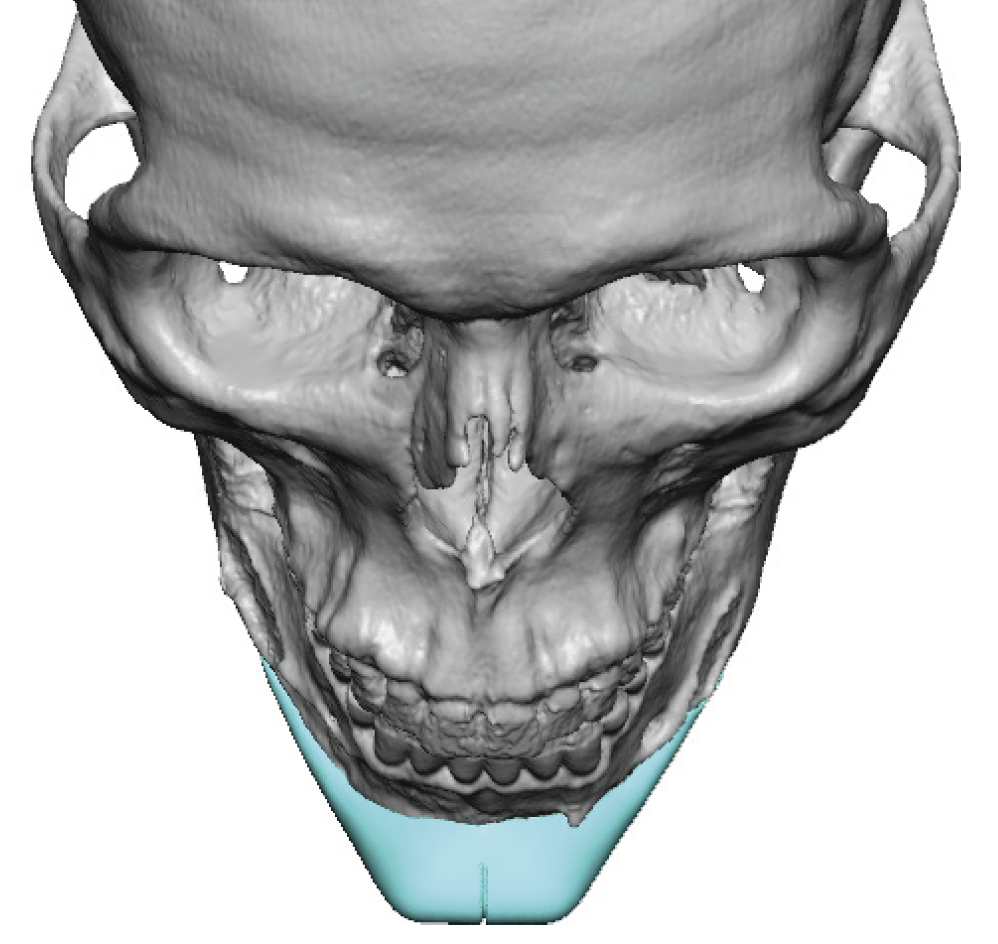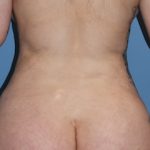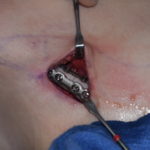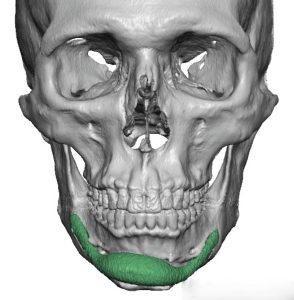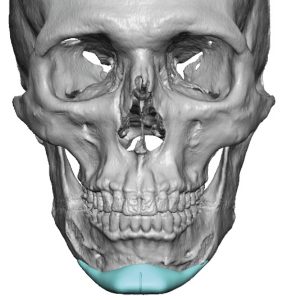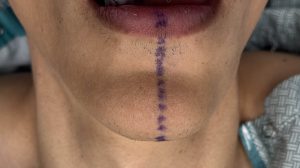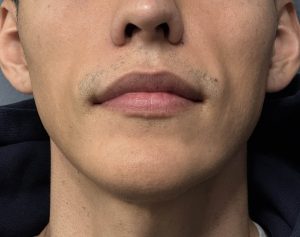Background: Chin implant are the most common form of aesthetic facial augmentation and our widely perform by all surgeons that operate in the face. However, despite the frequency of them being done and he perception that it is a fairly simple operation, there is a relatively high rate of revision with their use. One of the most common reasons for revision it is asymmetry in placement of the implant. This can occur from either the internal or external approach to its placement. Asymmetry of placement could be due to either a right or left shift or a vertical malposition or both.
Of the two surgical approaches to chin implant placement many patients opt for an intraoral approach in the belief that, everything else being equal, they will avoid an external scar. But the reality is that point of access it’s not equivalent to the submental approach and with that comes often unknown risks of which the patient is not aware. Besides having to cut through the origin of the mentalis muscle on the bone, which poses its own risk of postoperative tightness and some recovery issues, it can be more challenging to get the implant into proper position. The risk of having the implant sit too high, particularly when screw fixation is not used, is quite high. I can almost always tell how a chin implant was placed when I see a patient in need of a revision and their 3-D CT scan shows a highly positioned implant on the bone. There is nothing wrong with using an intra oral approach but it works best when the chin implant is small and screw fixation is used.
In evaluating a patient with chin implant asymmetry or an on desired aesthetic outcome, the first step is to get a 3-D CT scan to fully evaluate the implants position. This will also reveal the style and size of the implant. If the implant needs to be replaced one then has to decide whether using a standard or custom chin implant design would be best. That will be determined by what the patients aesthetic goals originally were and whether the indwelling chin implant shape and size could really successfully achieve them. If not then a new chin implant should be used that is custom designed to better achieve the desired aesthetic result.
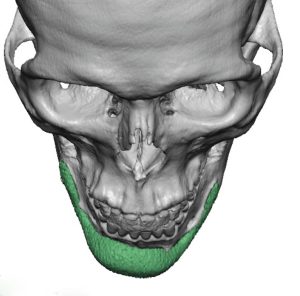

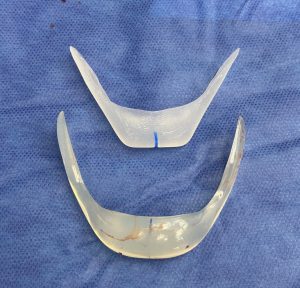
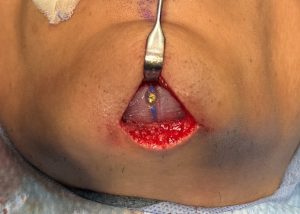
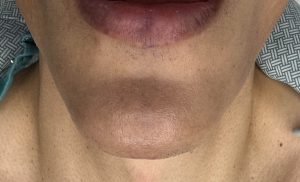
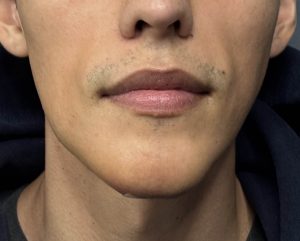
While a chin implant can seem like a simple operation its aesthetic results are completely influenced by the size and shape of the implant and where it is placed on the bone. While chin implants can be placed successfully both intraorally and externally, each incisional approach has distinct advantages and disadvantages. They are not completely the same in how the implant is placed and the intro approach does come with higher risk of implant positioning issues in my observations.
When it comes to the patient desiring a more square chin shape I do not find any standard off the shelf chin implant can really effectively do so. A square chin shape comes from an implant that has sharper corners and not one that is merely broader with round corners. Chin width should not be construed with a more square chin shape.
Key Points
1) Asymmetry of chin implant placement is not uncommon particularly when done intraorally.
2) The standard square chin implant does not really create a square shape but instead simply makes the chin broader/wider.
3) Only a custom chin implant design can create a truly square shape which actually is usually more narrow but with profoundly sharper corners.
4) In correcting chin implant asymmetry that was initially done intraorally it is usually best to change the approach to an external submental incision.
Dr. Barry Eppley
World-Renowned Plastic Surgeon

